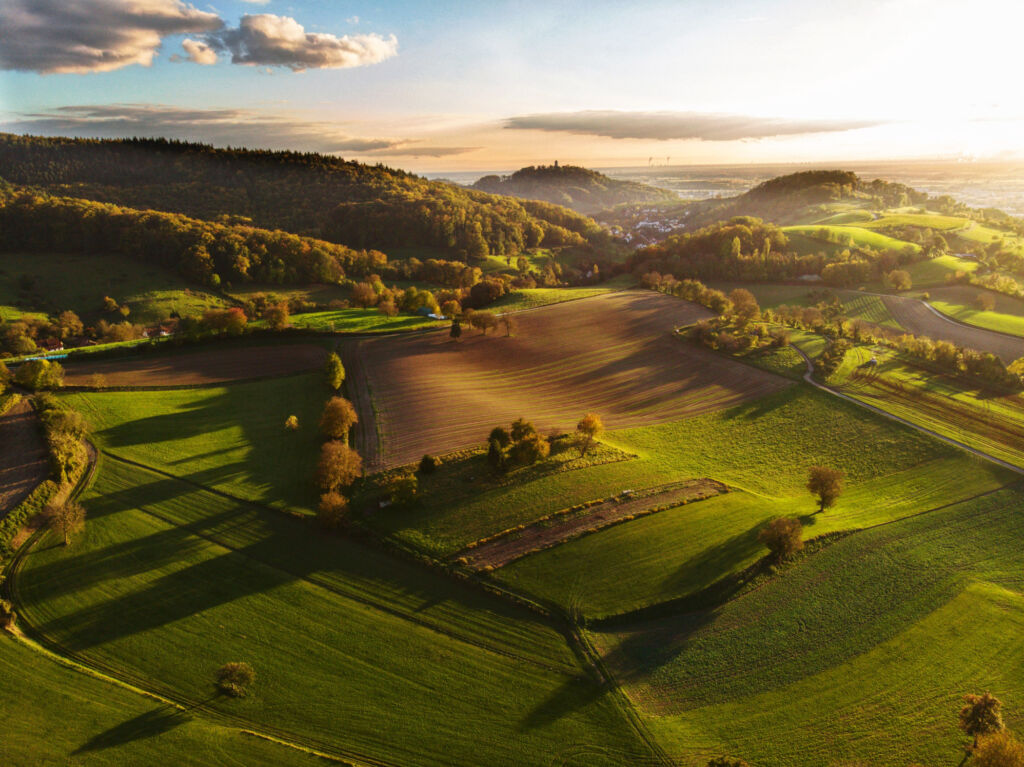
Those who prefer to take an active vacation in the mountains, forests and rivers may just want to take a trip to Odenwald. The place is a low mountain range in the German states of Hesse, Bavaria and Baden-Württemberg. Luxurious Magazine’s Sabi Phagura heads to Odenwald to visit some of the most memorable places between the Rhine, Main and Neckar rivers.
The Odenwald is a hiking region heaven interspersed with imposing and cultural experiences. I literally couldn’t head out of Frankfurt airport quickly enough to explore it. And while this lively city is wonderful to roam around in, I was eager to breathe in the clean, thin air Odenwald is famed for just 85kms away.
Our first stop was to Eberbach Monastery or its official name, Kloster Eberbach, with its 900 years of unique history. It was a good place to start to begin understanding how this part of the world was adopted by Cistercian monks as their home as far back as 1136.
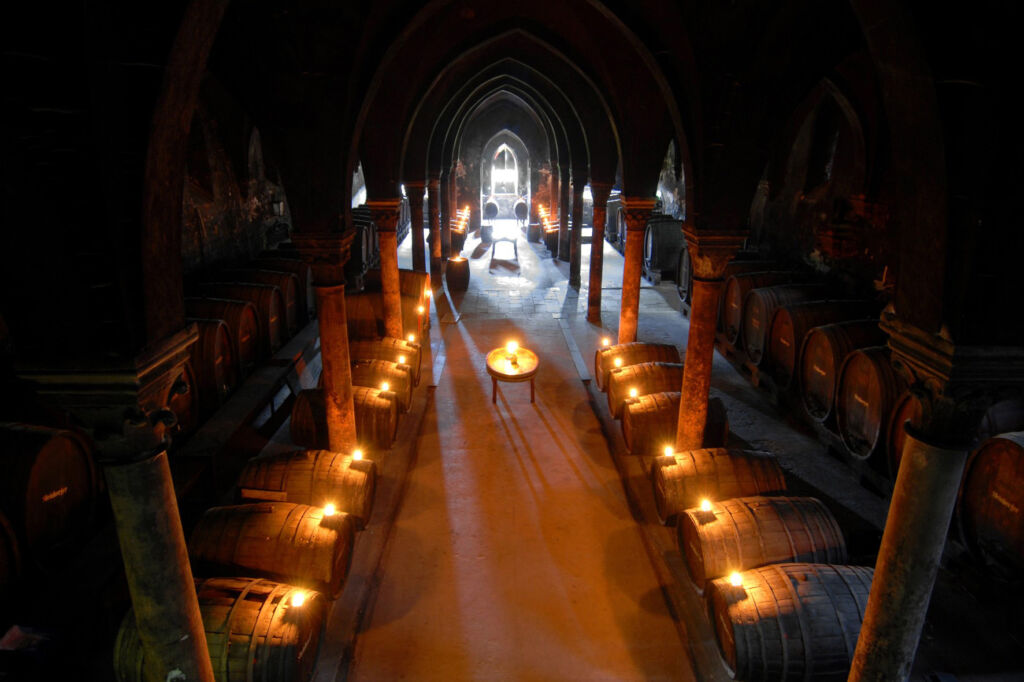
From the very beginning, Kloster Eberbach has been closely associated with wine. The founders brought it with them from their Burgundian homeland.
The fascinating wine cellar inside the monastery houses ancient presses and barrels, the monks’ baroque-style dining room as well and the cloisters steeped in history with an impressive arcade window by the internationally renowned artist Thomas Bayrle.
The abbey’s museum affords guests a deeper appreciation of the origins and history of the monastery with contemporary documents, sculptures and paintings. History buffs will be delighted to gain an insight into the preserved works of art and sacral objects to see, including a range of items on loan from public, church and private collections.
Today, as in the past, the Kloster’s domains extend over some of the best vineyards.
Viticulture has secured the existence of the well-preserved monastery over the centuries, and the grapes grown result in about 2.3 million bottles of wine and sparkling wine per year. It has no doubt helped the region to be filled with joie de vivre.
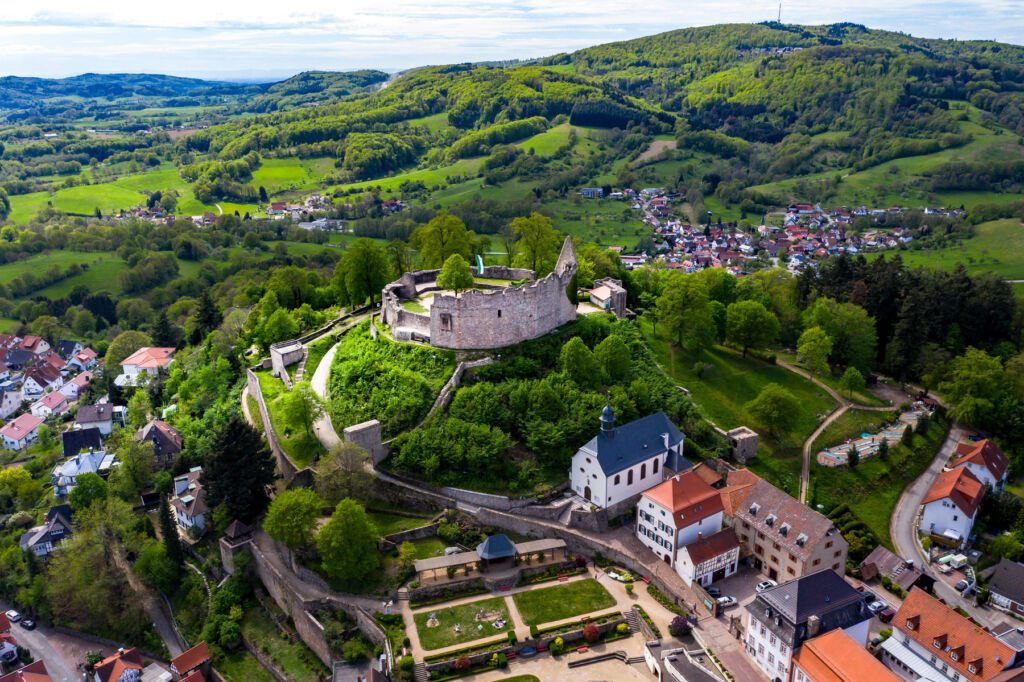
Germany’s Geo Parks
And, of course, nature, too, has a way of bringing about merriment, and Germany has six Geoparks (there are currently around 195 UNESCO Global Geoparks in 48 countries). These sites and landscapes all tell special stories of how the earth has evolved over millions of years.
Protecting them is of international geoscientific significance, and educating locals, tourists, children and undergraduates about this fascinating history falls on the shoulders of Geopark rangers.
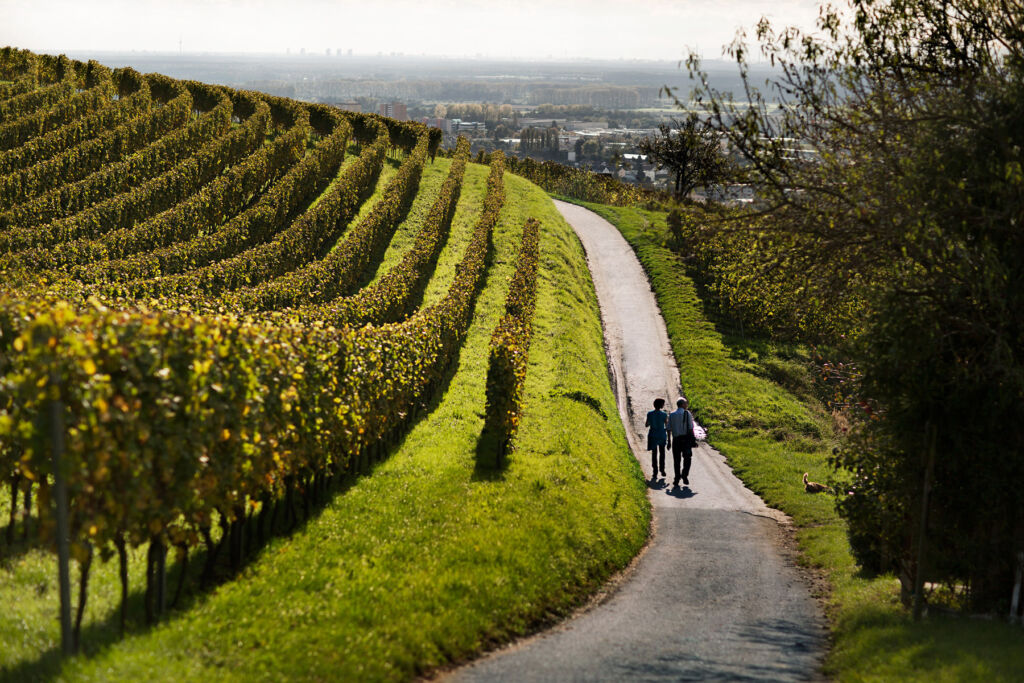
To get a peek into a unique window into Earth’s history, we head to the Bergstraße-Odenwald UNESCO Global Geopark. It’s located just 50 km south of Frankfurt, between the Rhine Valley in the west and the Main Valley in the east. The Odenwald hills are in the centre, and the entire area covers 3500 km².
There’s plenty to discover here about the region’s geology and cultural history, and we were in good hands with knowledgeable Geopark park rangers Pia and Susanne. As we hiked, the duo talked us through how the periods of weathering, erosion and deposition during the Ice Ages (two million to 10,000 years ago) modified the landscape as we see it today.
The western ‘Crystalline Odenwald’ consists of plutonic rocks (such as granite) that emerged around 340 million years ago due to the collision of two continents. Meanwhile, the sandstones and mudstones of the eastern ‘Bunter Sandstone Odenwald’ were deposited in temporary rivers and lakes (245 million years ago).
The importance of the red sandstone and granite for the Vorderer Odenwald is traced by the project Tromm Geocenter. The Tromm Tower is one of four stations where you can experience how the rocks were formed, how they were mined and how they were used.
Climbing up 192 steps of the Tromm to reach 577m above sea level was well worth the panoramic views over the Weschnitz Valley and the Rhine Plain to the Palatinate Mountains. I also got glimpses of red sandstone, which was used as an essential building material in architecture until the 20th century. To the west of the Tromm massif, granite was the predominant rock that has been used as building material in the towns for centuries.
Felsenmeer
Talking of rocks, we had the option to actually climb them in Felsenmeer. While a normal trail around the stones will take you to the Felsberg forest to learn about the formation of Felsenmeer, our group decided in unison it would be far more fun to clamber and climb over the gigantic rocks as a more direct route to get to the top.
This ‘sea of stones’ was once used as a quarry by the Romans 2000 years ago. Guide Marco revealed the stones were generated by a weathering process that occurred below the ground. These massive rocks were exposed as the surface began to erode.
This amazing natural phenomenon occurred across several Ice Ages and gave the rocks their round shape. Some have been lovingly given names such as the very natural-looking ‘Crocodile.’ The major attraction, and our reason to get to the top, was to see a massive column intended for a Roman temple. But for reasons unknown, the 9.3m long column weighing 27.5 tonnes was never removed from the site.
Solardraisine and Old Town Michelstadt
To give our legs a break (well, sort of), we jumped aboard the world’s first solar-powered railbike. The solar trolley’s electric motor springs into action as soon as you start peddling.
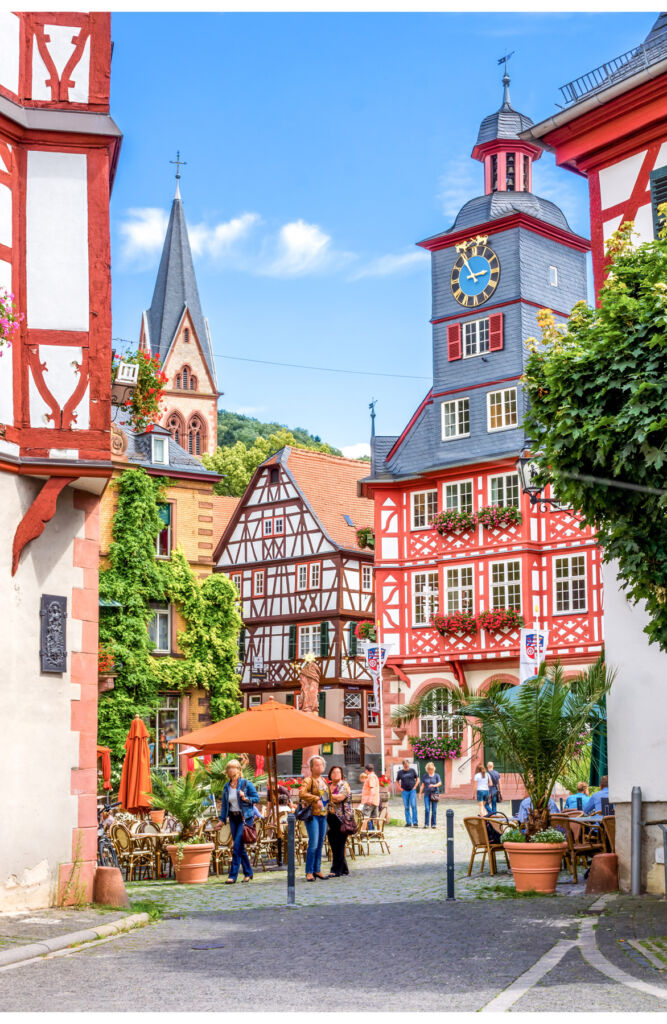 Fortunately, rotating the legs is not labour intensive, and the 10km ride along the Überwaldbahn route, which has been closed since 1994, was mastered rather comfortably.
Fortunately, rotating the legs is not labour intensive, and the 10km ride along the Überwaldbahn route, which has been closed since 1994, was mastered rather comfortably.
The leisurely pace allowed me to soak in the culture and historical significance between Mörlenbach and Wald-Michelbach Lauded as one of the most beautiful listed railway routes in Europe, the ride takes you over three large viaducts, through two tunnels, not to mention some of the most wonderful scenery.
It was back on foot, though, to explore the historical old town Michelstadt, situated in the heart of Odenwald. And a stroll through the winding streets of this old town is exactly how this town should be explored to soak everything in especially if you are interested in history.
This romantic little town is well-preserved and is one of the oldest settlements in the inner Odenwald. It has churches and buildings still standing from the ninth century. You certainly don’t want to miss the Historic City Hall, otherwise known as the Rathaus, right in the centre of the town. This imposing timber-frame building was built in 1484 in the late Gothic style.
Another notable building you will spot as you take a walk around Michelstadt is the Jewish Synagogue, otherwise known as the Landesrabbiner Dr. I.E. Lichtigfeld-Museum. A poignant place of worship, it doubles up as a museum because it’s one of the very few synagogues that survived WW2.
Viniversum Bergstrasse
I began by talking about the importance of wine in the region when it was made popular at Kloster Eberbach by the monks almost 900 years ago. But the production of wine was made possible on the Upper Rhine Rift millions of years ago, for it created the sun-bathed slopes of the Bergstrasse.
The soil left here during the last cold period has created ideal conditions for wine. So, if you’re a wine buff, a trip to Viniversum Bergstrasse’s ‘wine & stone’ wine trail right in the middle of the UNESCO Geopark Bergstrasse-Odenwald is well worth the effort.
On this incredibly peaceful hike led by our guide Michael, we were fully able to discover the vineyard landscape with its impressive grape varieties and learned how an old grape called ‘Roter Riesling’ (red Riesling) has become a new wine trend.
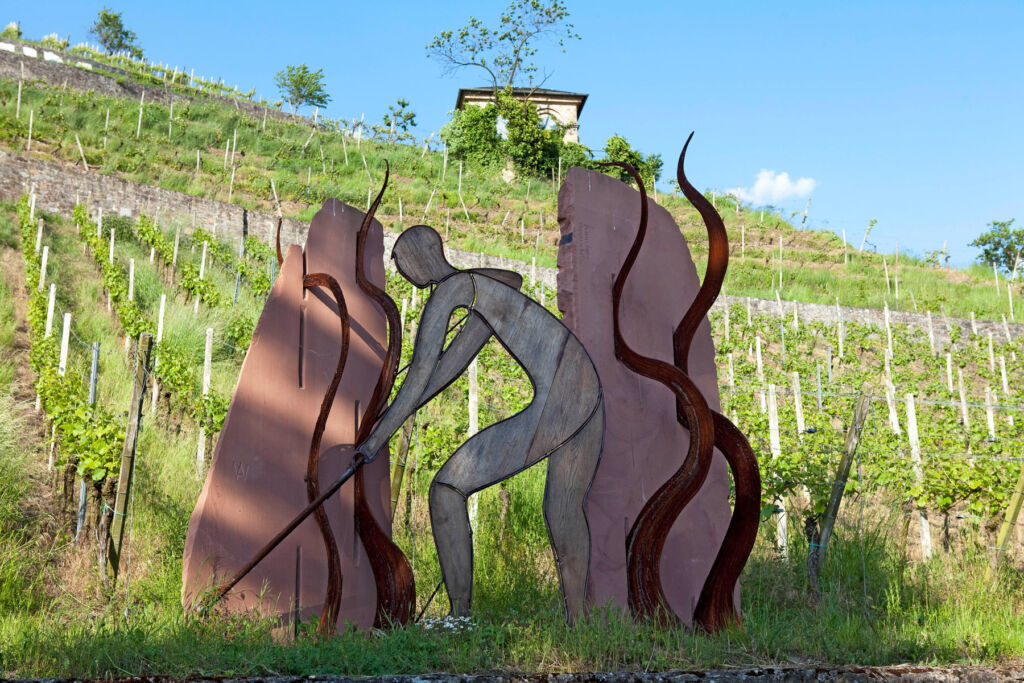
With almost 463 hectares of vineyards, the Hessische Bergstrasse is the smallest of the 13 German wine-growing regions. The growing area is characterised by the fact that a very large variety of grape varieties are grown on a very small area with many different soils.
Surrounded by wonderful panoramic views over five German wine-growing regions, a scattering of benches and seating areas invite you to linger here that little bit longer. Sat amidst the grapes as well as peach, almond and fig trees, it pays to take time out to take in all the unspoiled countryside around you.
With the trip coming to an end, it also provided the opportunity to reflect on all Odenwald has to offer, and the best word I could think of was Wunderbar!
Odenwald – Where and How?
For more information on Odenwald and other travel ideas around Germany, visit www.germany.travel/en/.
Lead photo of Odenwald courtesy of Bernd Dittrich on Unsplash. The other images used in this feature were supplied by the German National Tourist Board (GNTB). ![]()

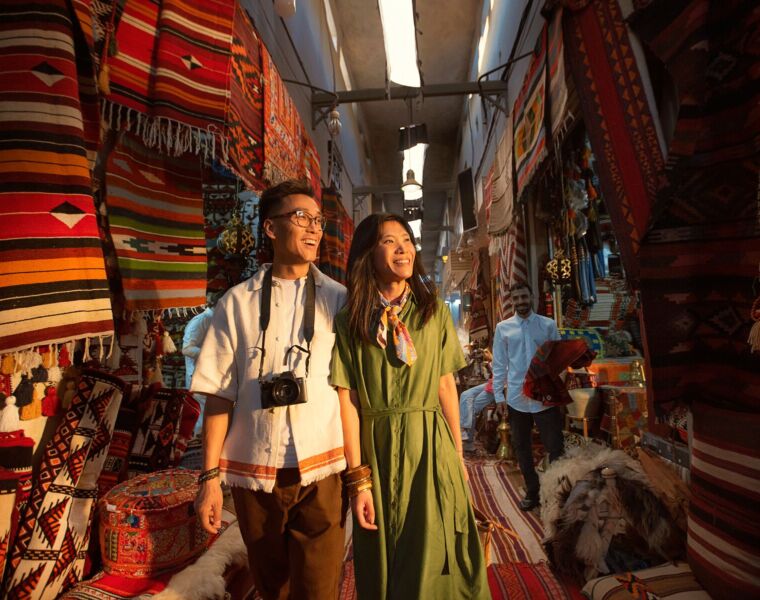
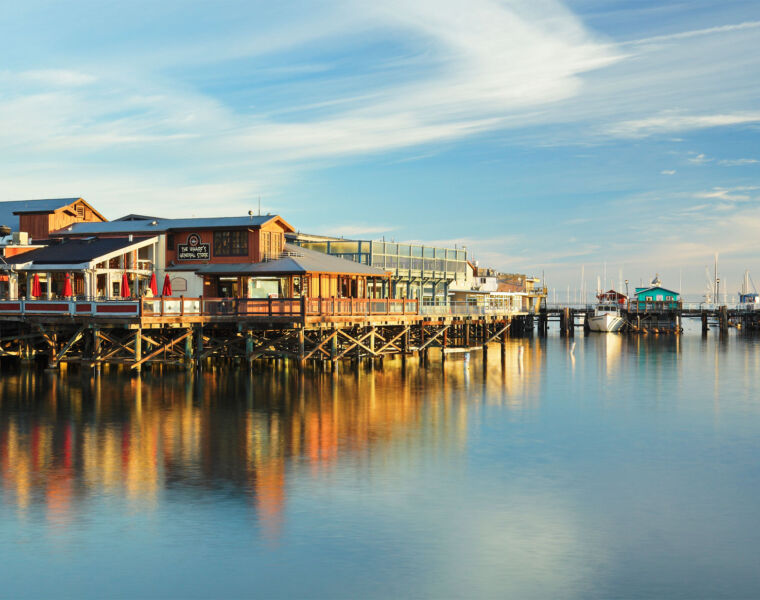
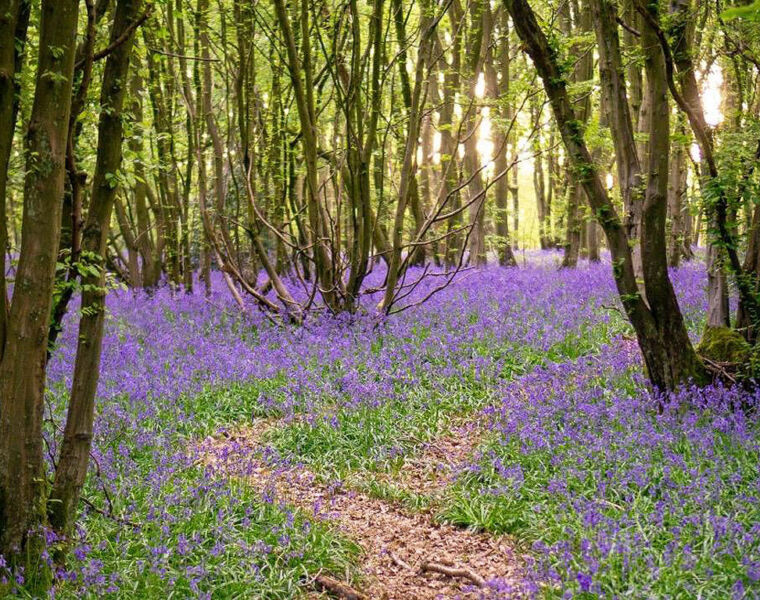
You must be logged in to post a comment.